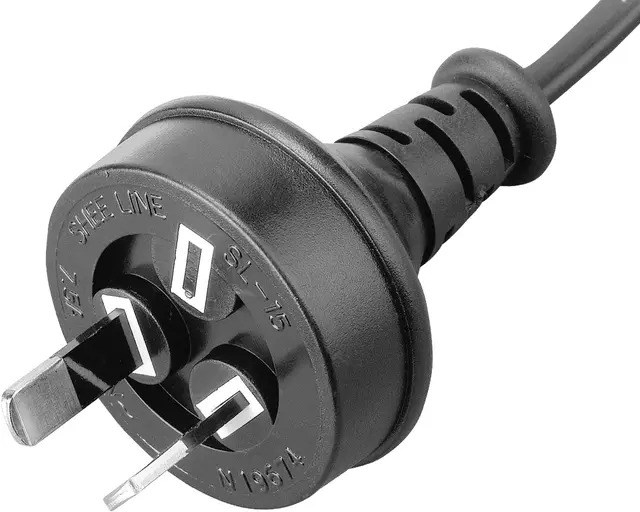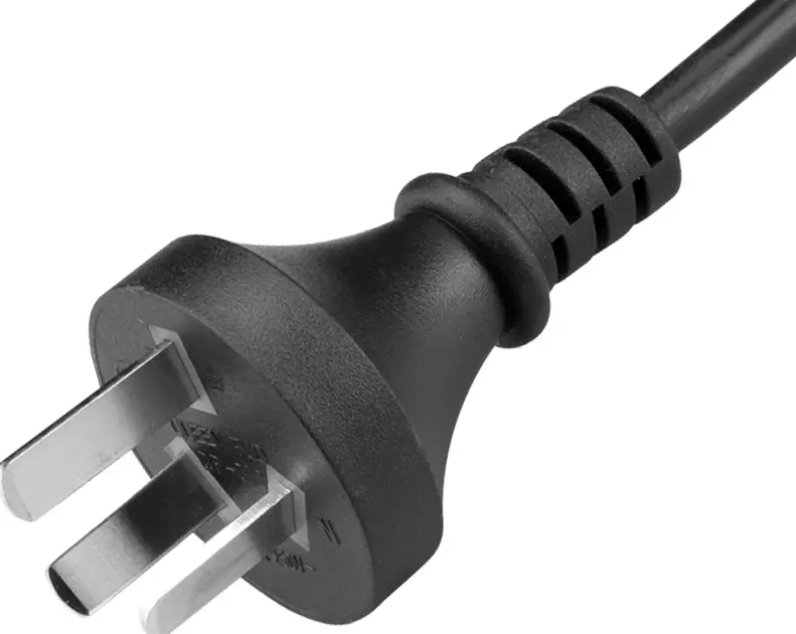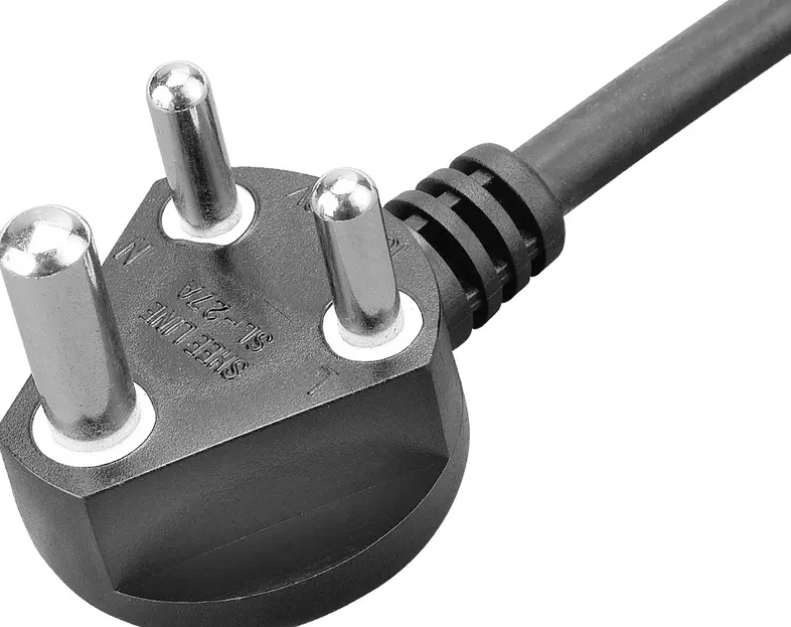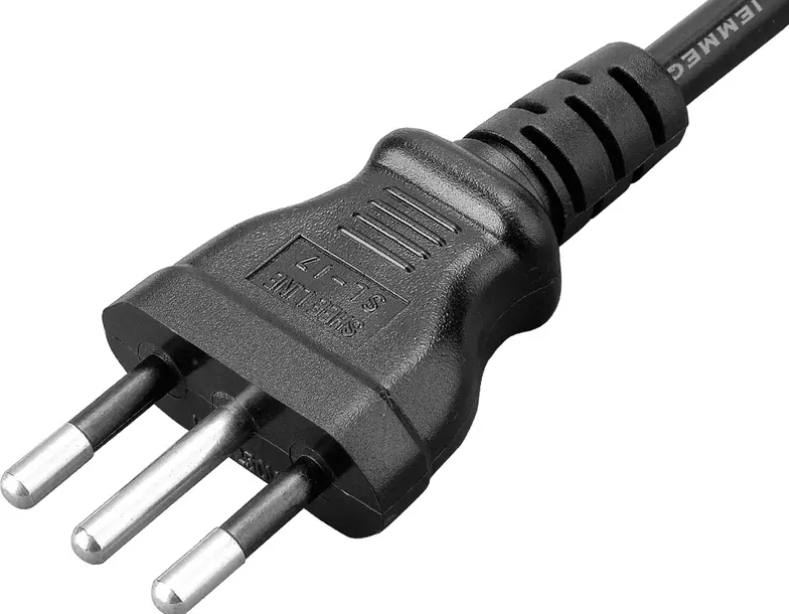- All
- Product Name
- Product Keyword
- Product Model
- Product Summary
- Product Description
- Multi Field Search
Views: 0 Author: Site Editor Publish Time: 2025-09-17 Origin: Site

Have you ever traveled abroad only to find your devices incompatible with local outlets? Plug compatibility is crucial for seamless international travel. Understanding the role of 3-pin plugs is essential for navigating global electrical systems. In this post, you'll learn which countries use specific 3-pin plug types and why they are vital for safe and efficient power usage worldwide.
When exploring international plugs by country, the 3-pin plug stands out as a common and essential design. These plugs provide grounding, enhancing safety for electrical appliances. Let's break down the main types of 3-pin plugs used worldwide, focusing on their design and typical regions of use.
The Type G plug features three rectangular pins arranged in a triangular pattern. It includes a built-in fuse, usually rated at 3 or 13 amps, depending on the appliance. This plug is known for its safety features, such as shutters on the live and neutral contacts, which prevent foreign objects from entering the socket. Type G is predominantly used in the UK, Ireland, and several former British colonies.
Type D plugs have three large round pins arranged in a triangular pattern. Rated at 5 amps, they are often found in older electrical systems. This plug type is common in India, Sri Lanka, Nepal, and Namibia. Some sockets in these countries also accept Type M plugs for larger appliances.
The Type I plug has two flat pins forming a V-shape and a grounding pin. It is used mainly in Australia, New Zealand, Papua New Guinea, and Argentina. The Australian version comes in 10-amp and 15-amp configurations, with the latter having a wider grounding pin to prevent incorrect insertion.
Similar in shape to Type D, the Type M plug has larger round pins and is rated for higher current. It is commonly used in South Africa, Swaziland, and Lesotho. Sometimes, Type M plugs are used alongside Type D plugs within the same country for heavy-duty appliances.
Type N plugs feature two round pins and a grounding pin. They come in 10-amp and 20-amp variants. Brazil is the primary country using this plug type, which was designed to be compatible with Type C plugs as well. The use of Type N reflects Brazil's effort to standardize its electrical outlets nationwide.
The Type G plug is one of the most recognizable international power plug types. It features three rectangular pins arranged in a triangular pattern, designed with safety in mind. The plug includes a built-in fuse, typically rated at 3 or 13 amps, which protects appliances from power surges. Additionally, the sockets have shutters on the live and neutral contacts to prevent accidental insertion of foreign objects. This combination of features makes Type G plugs a popular and secure choice in several countries around the world.

The United Kingdom is the origin and primary user of the Type G plug. It is the standard plug for all domestic and commercial electrical outlets. The UK's use of this plug type is deeply embedded in its electrical infrastructure, ensuring consistent compatibility for all electric plugs worldwide from this region. Travelers and businesses operating in the UK often need to consider Type G when arranging electrical adapters by country.
Ireland also uses the Type G plug as the standard for electrical outlets. Like the UK, Ireland's electrical system incorporates the safety features associated with Type G plugs. This plug type is prevalent in homes, offices, and public spaces throughout Ireland, making it essential knowledge for anyone visiting or doing business there.
Cyprus follows the British tradition by using the Type G plug widely. Whether in residential areas, hotels, or commercial buildings, the Type G plug is the norm. This consistency aligns Cyprus with many other former British colonies in terms of electrical standards.
Malta uses Type G plugs as well. Visitors to Malta will find the familiar three-pin rectangular plug in all electrical outlets. For those carrying devices from countries with different plug types worldwide, a suitable electrical adapter by country is necessary.
Singapore's electrical infrastructure features the Type G plug system. Known for its modern and safe electrical standards, Singapore requires the use of Type G plugs in most settings. This plug type supports the city-state's emphasis on safety and reliability in power supply.
Malaysia employs the Type G plug throughout its electrical outlets. The plug's built-in fuse and safety shutters are important in Malaysia's urban and rural areas alike. When planning travel or business operations in Malaysia, understanding the international plugs by country helps ensure seamless electrical compatibility.
Hong Kong also uses the Type G plug as its standard. This plug type is common in residential, commercial, and industrial electrical outlets. The use of Type G plugs in Hong Kong reflects its historical ties with the UK and commitment to safe electrical standards.
Tip: When doing business across countries using Type G plugs, always carry a certified electrical adapter and check the fuse rating to protect your equipment from voltage fluctuations.
Type D plugs are a distinctive form of three-pin plug known for their large round pins arranged in a triangular pattern. Rated at 5 amps, they are commonly found in older electrical installations. This plug type is especially prevalent in countries where legacy electrical systems coexist with newer ones, often requiring travelers and businesses to carry appropriate electrical adapters by country to ensure compatibility.
India is the primary country associated with Type D plugs. These plugs are standard in most Indian households and commercial buildings. Although newer installations might support other plug types, Type D remains widespread due to the country's extensive use of legacy electrical infrastructure. Many sockets in India also accept Type M plugs, which are larger and used for heavy-duty appliances. Understanding these world power plug types is essential for anyone planning to visit or operate equipment in India.
Sri Lanka uses Type D plugs extensively, mirroring the system used in India. The three large round pins provide grounding, which enhances safety in electrical outlets worldwide. Given Sri Lanka's reliance on this plug type, international travelers and businesses should ensure they have the correct electrical adapters by country to avoid inconvenience and potential damage to devices.
In Nepal, Type D plugs are commonly found, especially in residential and older commercial buildings. The plug's design suits the country's electrical standards, which often operate at 230 volts and 50 Hz frequency. For those importing equipment or visiting Nepal, recognizing the international power plugs by country, including Type D, helps in preparing the right adapters and converters.
Namibia also uses Type D plugs, although they coexist with other plug types in some areas. The presence of Type D plugs reflects historical influences and local electrical standards. Businesses dealing with equipment in Namibia should be aware of the plug types worldwide to ensure seamless electrical compatibility and safety.
Tip: When traveling to or doing business in countries using Type D plugs, always carry a universal electrical adapter compatible with both Type D and Type M plugs to cover all power plugs worldwide scenarios.

The Type I plug is a distinctive 3-pin plug featuring two flat pins forming a V-shape and a grounding pin. This design ensures safety by providing a reliable earth connection, which is essential for many electrical appliances. When looking at international plugs by country, the Type I plug is mainly used in Australia, New Zealand, Papua New Guinea, and Argentina. These countries have adopted this plug type to meet their electrical safety standards and compatibility requirements.
Australia's electrical system uses the Type I plug as the standard for most electrical outlets. The plug comes in two variations: a 10-amp version with slimmer pins and a 15-amp version with a wider grounding pin to prevent incorrect insertion. This ensures that devices designed for higher current cannot be plugged into lower-rated sockets, promoting safety. Australian sockets are designed to accept both versions, making it flexible for various appliances. Understanding these world power plug types is essential for travelers and businesses dealing with electrical adapters by country.
New Zealand shares the same Type I plug standard as Australia. The electrical outlets support both 10-amp and 15-amp plugs, maintaining consistency between the two countries. This compatibility simplifies travel and trade between Australia and New Zealand, as electric plugs worldwide often vary greatly. When preparing for travel or international business, knowing the plug types worldwide helps avoid compatibility issues.
Papua New Guinea also uses the Type I plug system, aligning with Australian standards due to geographic and economic ties. The grounding pin and flat angled pins provide safe and secure connections for electrical devices. Since Papua New Guinea's electrical infrastructure is similar to Australia's, travelers and companies should consider this when sourcing electrical adapters by country or shipping electrical equipment.
Argentina uses a version of the Type I plug, although it is less common compared to other plug types in South America. The Argentine Type I plug has the same flat angled pins and grounding pin but may differ slightly in size and rating. This plug type supports the country's 220-volt, 50 Hz electrical system. For international travelers or businesses operating in Argentina, awareness of this plug type is important to ensure electrical compatibility and safety.
Tip: When traveling to countries using Type I plugs, carry a multi-voltage electrical adapter compatible with both 10-amp and 15-amp Type I plugs to cover all power plugs worldwide scenarios.
Type M plugs are a robust variant of the 3-pin plug family, featuring three large round pins arranged in a triangular pattern. They are similar in appearance to the Type D plugs but differ mainly in pin size, with Type M pins being thicker and designed to handle higher current loads. This makes them suitable for heavy-duty appliances and industrial equipment. Type M plugs are commonly found in South Africa, Swaziland (Eswatini), and Lesotho, where they serve as the standard for many electrical outlets.
South Africa is the primary user of Type M plugs. The country's electrical infrastructure often uses these plugs for larger appliances, such as air conditioners and kitchen equipment, due to their higher current rating. While Type D plugs are also present in some older installations, Type M is increasingly the standard for new constructions. This dual presence means travelers and businesses should carry electrical adapters by country that accommodate both plug types to ensure compatibility.
Swaziland, officially known as Eswatini, uses Type M plugs extensively in residential and commercial settings. The country's power plugs worldwide typically follow South Africa's standards, given their close geographic and economic ties. This consistency simplifies the use of electrical devices and adapters when moving between these neighboring countries.
Lesotho also employs Type M plugs as the standard for electrical outlets. Like South Africa and Swaziland, Lesotho's electrical system supports these plugs to provide safe and reliable power connections, especially for appliances requiring grounding. Businesses operating in Lesotho should be aware of these plug types worldwide to ensure equipment compatibility and safety.
Tip: For B2B operations in Southern Africa, always stock electrical adapters compatible with both Type M and Type D plugs to cover all common power plugs worldwide scenarios in the region.
Type N plugs are a unique category among the 3-pin plugs, primarily used in Brazil. These plugs feature two round pins and a grounding pin, designed to provide secure and safe electrical connections. Brazil developed the Type N plug to standardize its electrical outlets nationwide, aiming for compatibility and enhanced safety. There are two versions of this plug: one rated at 10 amps and another at 20 amps for heavier appliances.
The Type N plug's design allows it to be compatible with Type C plugs, which are widely used in many countries. This compatibility makes it easier for travelers and businesses to manage electrical adapters by country when dealing with Brazilian power plugs. Brazil has a mixed voltage system—some states use 127 V, while others operate at 220 V. This variation means it's crucial to check the local voltage before plugging in any device, as using the wrong voltage can damage appliances.
Brazil's adoption of the Type N plug reflects its commitment to modernizing electrical outlets worldwide and ensuring safety standards are met. The grounding pin is essential for protecting devices and users from electrical faults. This plug type is becoming more common in new buildings and public infrastructure, gradually replacing older standards.
For international businesses exporting electrical equipment to Brazil, understanding the world power plugs by country, especially the specifics of Type N plugs, is vital. Supplying compatible power plugs worldwide ensures that products can be safely and efficiently used without requiring additional adapters or modifications.
Tip: When shipping electrical products to Brazil, always verify the voltage specifications and provide compatible Type N power plugs to ensure safety and compliance with local electrical standards.

Understanding 3-pin plug types is crucial for international compatibility. Type G is used in the UK and former colonies, Type D in India and Sri Lanka, Type I in Australia and New Zealand, Type M in South Africa, and Type N in Brazil. Travelers should consider local plug types for seamless connectivity. Sheeline offers products ensuring safe and efficient use of electrical devices worldwide, providing value through reliable, high-quality adapters tailored to diverse plug types.
A: Type G international plugs are used in the United Kingdom, Ireland, Cyprus, Malta, Singapore, Malaysia, and Hong Kong. These plugs feature three rectangular pins and are known for their safety features, including built-in fuses and shutters on the contacts.
A: Type D international plugs are primarily used in India, Sri Lanka, Nepal, and Namibia. These plugs have three large round pins and are common in older electrical systems, often requiring specific electrical adapters by country.
A: Type I international plugs are commonly used in Australia, New Zealand, Papua New Guinea, and Argentina. These plugs feature two flat pins forming a V-shape and a grounding pin, ensuring safety in electrical connections.
A: Type M plugs are used in South Africa, Swaziland (Eswatini), and Lesotho. These plugs are designed for heavy-duty appliances, featuring larger round pins to handle higher current loads.
A: Brazil primarily uses Type N plugs, which feature two round pins and a grounding pin. These plugs are designed for compatibility with Type C plugs and support Brazil's mixed voltage system.
Blog
